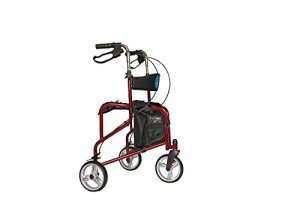The Mobility Aid Success Story You'll Never Believe
페이지 정보
작성자 Lauren 작성일 25-07-12 16:31 조회 56 댓글 0본문

Understanding Mobility Aids: Enhancing Independence and Quality of Life
Mobility aids are necessary tools that help people with physical disabilities or conditions that impede their ability to move easily. These aids not just promote self-reliance and boost quality of life but likewise supply safety and support for users in numerous environments. The landscape of mobility aids is broad, incorporating a range of gadgets customized to satisfy specific requirements. This short article aims to check out the various kinds of mobility aids, their benefits, considerations for use, and regularly asked questions.

Types of Mobility Aids
Mobility aids can be categorized into several significant types, each developed to help in particular ways. Below is a table summarizing the most common mobility aids:
| Type of Mobility Aid | Description | Suitable Use Case |
|---|---|---|
| Wheelchairs | A chair installed on wheels utilized by those not able to walk. | Long-term disability or serious mobility concerns. |
| Walkers | A frame that offers support for individuals while walking. | Post-surgery healing or balance problems. |
| Walking sticks | A stick utilized for balance and support while walking. | Mild mobility problems or as a preventive measure. |
| Rollators | A walker equipped with wheels and typically a seat. | People requiring assistance over longer distances. |
| Crutches | Devices utilized to raise and support the body weight of an individual with a leg injury. | Temporary injuries requiring non-weight bearing. |
| Scooters | A motorized gadget for those who can sit however not stroll long distances. | Long trips and fatigue-prone individuals. |
| Raise Chairs | Recliners that raise to assist users in standing. | Elderly people or those with severe pain. |
Benefits of Mobility Aids
Making use of mobility aids extends beyond simple transport; they serve numerous important functions in enhancing the wellness of users:
- Independence: Mobility aids empower users to perform day-to-day activities without relying heavily on caregivers or support from others.
- Safety: Many mobility aids are created to minimize the threat of falls, offering users with stability when moving around.
- Improved Quality of Life: By enhancing mobility, individuals can engage in social activities, workout, and preserve community connections, favorably affecting their mental health.
- Access to Environments: Mobility aids can help with access to locations that may otherwise be challenging to navigate, such as public transportation and public areas.
- Assistance Recovery: They play a crucial role in rehab following surgery or injury by promoting gradual mobility and helping recovery.
Considerations for Choosing the Right Mobility Aid
Picking the appropriate mobility aid can substantially influence an individual's lifestyle. Here are several crucial factors to consider to remember:
- Level of Mobility Impairment: Assess the intensity of mobility problems to identify the most suitable type of aid.
- User's Physical Condition: Consider factors like weight, strength, and general health.
- User's Lifestyle and Environment: Analyze where the mobility aid will be used most frequently: indoors, outdoors, or both.
- Practical Needs: Evaluate if additional functions such as storage, seating, or height modifications are needed.
- Consultation with Professionals: Always consult from health care specialists for assistance customized to private circumstances.
Regularly Asked Questions (FAQs)
Q1: What is the distinction in between a walker and a rollator?A1: A walker is an easy frameused for support and balance, while a rollator has wheels, providing much easier mobility and frequently comes with additional functions such as a seat and storage. Q2: Can mobility aids be covered by insurance?A2:
Many medical insurance plans, including Medicare, may cover mobility aids if they are considered clinically needed. It is advisable to talk to your insurance supplier for particular details. Q3: How do I understand when it's time to use a mobility aid?A3: If you've experienced regular falls, persistent discomfort
while walking, or have trouble completing day-to-day activities
, it may be time to consider a mobility aid. Speak with a health care expert for tailored guidance. Q4: Are there mobility aids developed for outdoor use?A4: Yes, many mobility aids are specifically developed for Outdoor Walker environments, consisting of scooters, outdoor walkers, and all-terrain wheelchairs, equipped to manage various surfaces. Q5: Can I use a mobility aid after surgery, like knee replacement?A5: Yes, mobility aids such as walkers and crutches are frequently recommended post-surgery to aid healing and preserve safety as you restore
strength. Mobility aids play an indispensable function in supporting people with mobilityobstacles, facilitating self-reliance, and enhancing total quality of life. With a diverse variety of choices available, it's crucial for users to evaluate their distinct requirements and consult with specialists to choose the most appropriate aid. As innovation and design continue to develop, these aids will certainly end up being a lot more easy to use and effective, promoting a more inclusive world for everybody. By comprehending the various kinds of mobility aids and their particular benefits, individuals can make informed options that enhance their mobility and facilitate a more active and satisfying lifestyle.
- 이전글 Ten Argon Gas Window Repairs That Really Improve Your Life
- 다음글 16 Must-Follow Facebook Pages To Window And Door Companies Near Me-Related Businesses
댓글목록 0
등록된 댓글이 없습니다.

